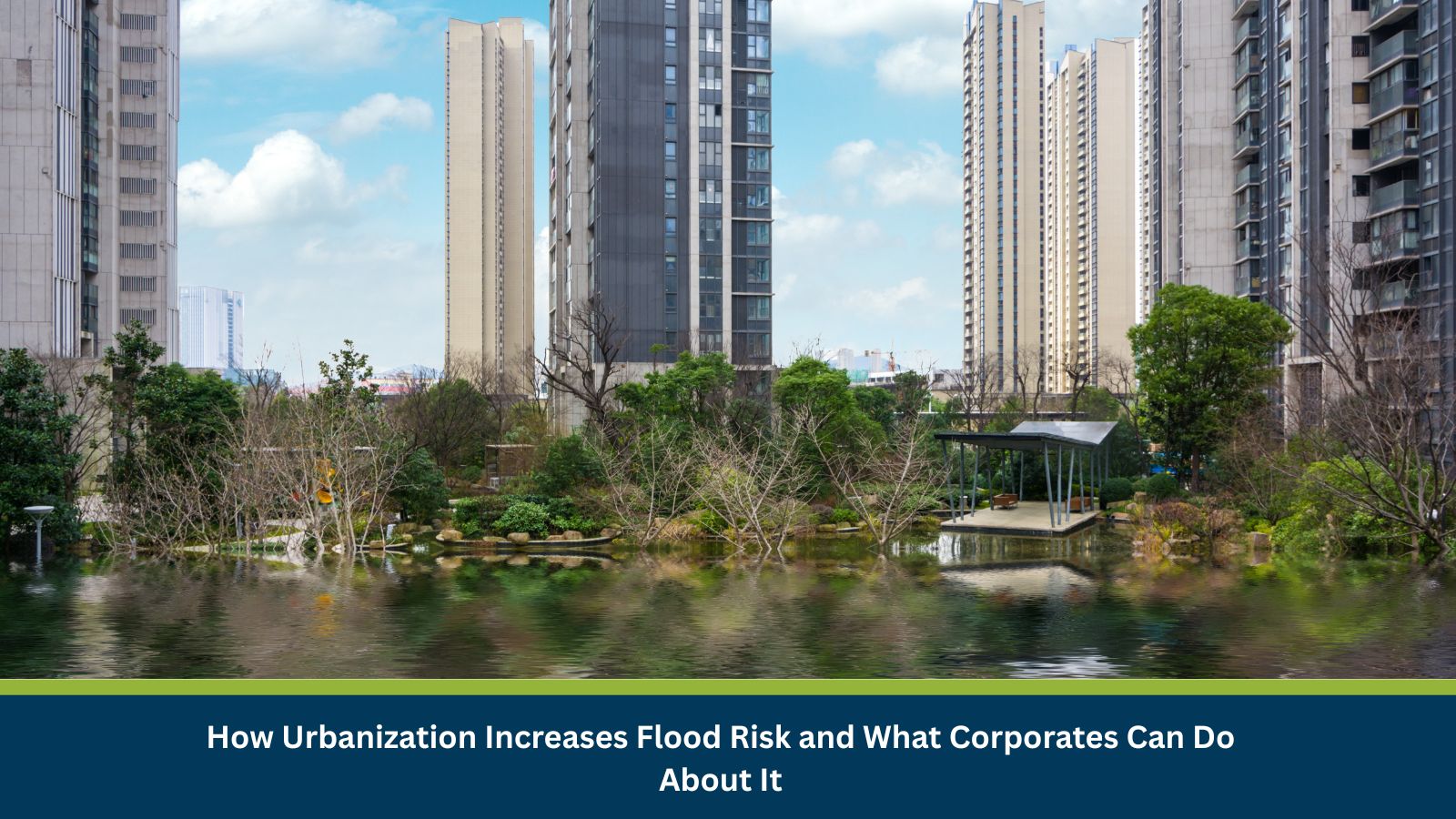The Urban Flood Paradox
Urbanization is both an economic engine and an emerging risk accelerator. As cities expand to accommodate booming populations and industries, they inadvertently amplify their exposure to floods. Over 55% of the world’s population now resides in urban areas, a figure projected to reach 70% by 2050 (UN Habitat).
For corporates operating in dense urban clusters, this trend translates into increased operational and financial vulnerability. Poor drainage infrastructure, loss of wetlands, and unregulated construction have turned what were once “100-year floods” into near-annual events. In India, cities such as Mumbai (2005), Chennai (2015), and Bengaluru (2022) offer costly reminders that urban flood risk is not just a municipal challenge, it’s a business continuity issue.
Why Corporates Should Worry
The impact of urbanization on flooding extends beyond physical damage. Floods disrupt production, logistics, and supply chains, impacting the top and bottom line. During the 2022 Bengaluru floods, operations in major IT parks were halted for days, causing estimated business losses of over USD 30 million (World Economic Forum, 2025).
As infrastructure vulnerability rises, insurers are tightening coverage and investors are demanding climate-related disclosures. Frameworks like the Task Force on Climate-Related Financial Disclosures (TCFD) and Business Responsibility and Sustainability Reporting (BRSR) now require companies to report physical climate risks, including floods within their ESG frameworks. Failing to prepare is no longer an option; it’s a governance and fiduciary concern.
Flood Risk Assessment: The First Line of Defence
Before businesses can act, they must first understand their exposure. A flood risk assessment provides that foundation – combining geospatial, meteorological, and infrastructural data to evaluate the likelihood and impact of flood events.
A robust corporate flood risk assessment typically includes:
- Hazard Mapping: Using GIS and satellite data to overlay facility locations on historical and projected flood zones.
- Vulnerability Analysis: Assessing the sensitivity of critical assets from data centers and logistics hubs to employee clusters.
- Impact Modelling: Quantifying potential business losses, downtime, and insurance exposure.
- Mitigation Planning: Recommending structural (e.g., flood barriers) and non-structural (e.g., continuity plans) measures.
Risk Intelligence platforms such as Datasurfr enhance these assessments with real-time flood alerts, updates on weather changes, and risk impact scoring, enabling decision-makers to act ahead.
When integrated into enterprise risk management (ERM), these assessments help organisations move from reactive recovery to predictive prevention, a hallmark of climate-resilient operations.
Corporate Strategies for Managing Urban Flood Risk
Corporate leaders can no longer delegate flood management to facility teams; it demands boardroom attention. Here’s how forward-looking firms are addressing the challenge:
Institutionalise Climate Risk Governance
Designate climate and disaster risk management responsibilities at the leadership level. Integrate flood risk scenarios into enterprise risk registers and continuity frameworks.
Strengthen Facility and Supply Chain Resilience
Relocate or retrofit high-exposure facilities. Conduct flood preparedness for businesses across logistics routes and critical supplier sites. Prioritise redundancy for data storage, energy supply, and communication systems.
Leverage Technology and Predictive Analytics
Use AI-driven insights from tools like Datasurfr to receive granular, location-specific flood alerts. Combine with IoT-enabled sensors for real-time monitoring of rainfall, water levels, and soil saturation.
Align Insurance and Investment Strategy
Review existing insurance for adequacy against extreme weather events. Engage insurers to reward proactive resilience measures with premium reductions or enhanced coverage.
Collaborate with Government and Communities
Public-private partnerships (PPPs) can accelerate the development of sustainable urban planning solutions such as green infrastructure, permeable pavements, and restored wetlands. Cities like Singapore and Rotterdam showcase how corporate participation can complement urban flood resilience programs.
Towards Corporate Climate Resilience
Floods will continue to test the adaptability of urban economies. But by embedding flood risk assessment and climate resilience in cities into business strategy, corporates can transform exposure into foresight.
The message is clear: flood preparedness is a competitive advantage. Organisations that anticipate and plan for climate extremes will be better positioned to protect people, assets, and reputation.
Your Security Partner
MitKat’s Datasurfr platform delivers real-time, AI-powered risk intelligence, filtered and contextualised by expert analysts to support proactive decision-making. Paired with our Protective Services, we turn intelligence into action, safeguarding your leadership wherever they operate. Collaborate with MitKat to build true business resilience. From Risk Consulting and Security Design to Cyber Security and Protective Services, our integrated solutions help organisations navigate today’s complex threat landscape and build robust, future-ready risk management frameworks.






